Educational Content
At Kumamoto University, the Department of Civil and Environmental Engineering and the Department of Architecture merged in FY Heisei 30 (2018) to form the Department of Civil Engineering and Architecture. This site offers information on the “Civil Engineering Education Program” and “Regional Design Education Program.”
Civil and Environmental Engineering Education Program
In the Education Program of Civil and Environmental Engineering, we nurture highly specialized engineers who utilize wide-ranging perspectives, knowledge, and highly specialized skills regarding disaster prevention and mitigation; planning, design, construction, and maintenance of social infrastructure; and resource-recycling environmental protection in order to be able to achieve sustainable development.
What will students learn?
- Design, maintenance, and management technologies for social infrastructure such as bridges, roads, tunnels, and underground spaces
- Creation of a disaster-resistant and disaster-reducing city and society
- Environmental assessment of rivers, coasts, the atmosphere, etc., and environmental conservation technology
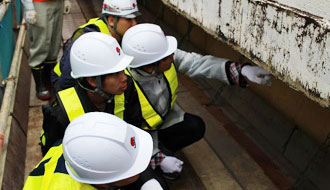
- Bridge salt damage survey
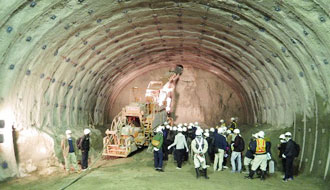
- Tunnel excavation site
Urban and Regional Planning and Design Engineering Education Program
In the Education Program of Urban and Regional Planning and Design, we nurture integrated engineers who can specifically define and provide solutions for the complex issues facing local communities—such as social systems, urban development, and landscape design—and can build next-generation social systems for practical urban development and public policy.
What will students learn?
- Analysis of urban areas and the movement of people and vehicles, and evaluation of policies to solve problems
- Landscape design that brings out the beauty of the scenery and urban design that creates places of belonging for people
- Sustainable social innovation rooted in the local culture and connected to everyday life

- Mashiki Lab, Kumamoto University
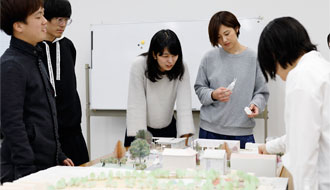
- Town planning exercise using a model
Over 120 years history
The history of civil engineering at Kumamoto University dates back to the founding of the Faculty of Engineering of the Fifth High School in Meiji 30 (1897). The university boasts the third longest history in Japan, after the University of Tokyo (Meiji 11 [1878]) and Kyoto University (Meiji 30 [1897]). In 2017, the school will celebrate its 120th anniversary and has approximately 5,800 graduates.
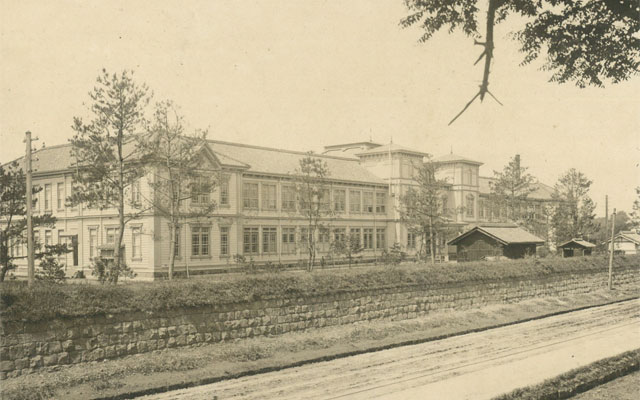
- Meiji-era school building
Attraction of academics
The appeal of learning
Target areas: Living space to global environment

Civil engineering and regional design are an amalgamation of several disciplines that is difficult to summarize in a few words. With a vast scope that ranges from our everyday living space to the global environment, it covers a multitude of specialized fields and is hard to imagine as being contained within a single department.
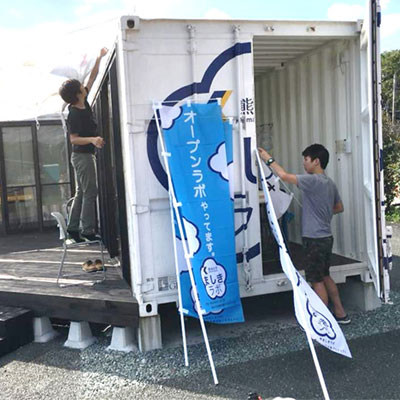
- Urban development with residents
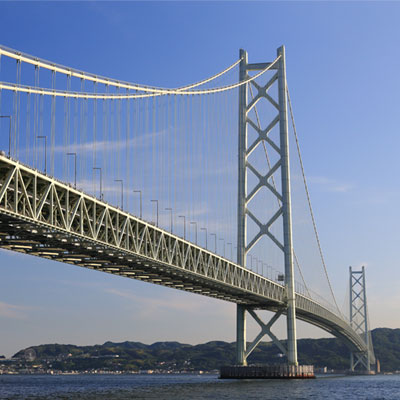
- Bridge and road construction
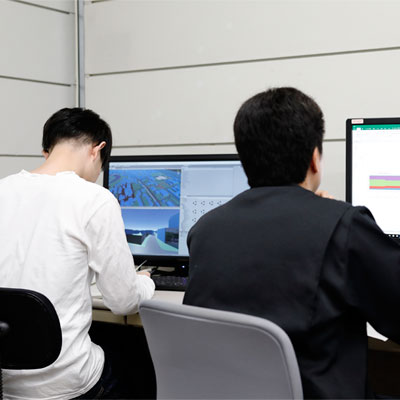
- Regional and structural analysis
Enable to create things that people will cherish for a long time
As infrastructure development is large-scale, the expected lifespan of structures is long, such as 50 or 100 years. This requires forward-thinking planning that looks ahead 50 or 100 years, durability, consideration for the landscape, and facility design. Furthermore, designing social infrastructure also means creating the history of the region. Planning and designing social infrastructure is difficult work, but it is also extremely creative work.
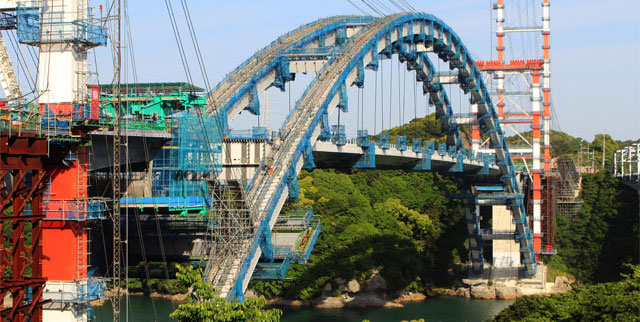
Enable to discover a wide variety of technologies
The development of social infrastructure is a large-scale undertaking and requires a wide variety of technologies. For example, information technology, mechanical technology, and chemical technology are often used, and making good use of these technologies in design and construction is also important. Information technology, in particular, has a wide range of applications, including remote sensing, GIS, CAD, and CG, and it is a key technology in civil engineering and regional design.
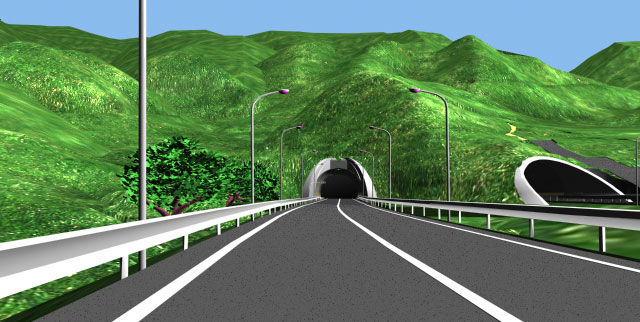
- CG technology

- Rock-mass property testing equipment
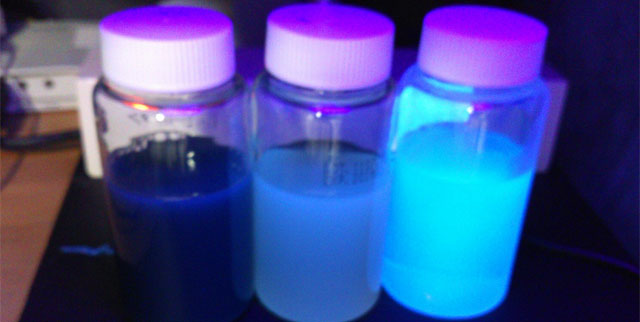
- Fluorescent detection of microorganisms
Various types of people can thrive
Because it is a diverse field of study that deals with society, humans, and nature, people of all backgrounds, regardless of whether they are in the sciences or humanities, have opportunities.
- People who are interested in natural mechanisms and mathematics
- People who like creating
- People interested in the environment
- People interested in urban development
- People who are interested in humanities, such as society and people
Cultivating engineering sense through practice
Through experiments, practical training, exercises, and site visits, students can learn specialized knowledge and develop a practical sense of engineering.
-

Site Tour
-

Information Processing Exercises
-

Experimental Training
-
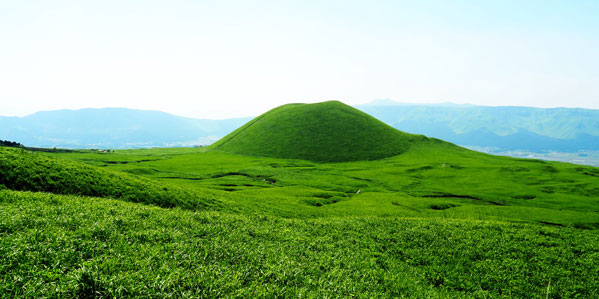
Aso (groundwater survey, etc.)
-
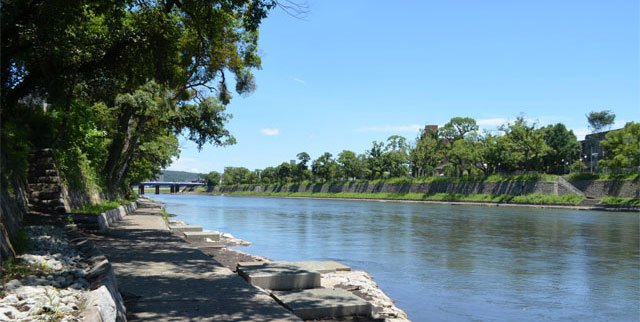
Shirakawa (landscape design, etc.)
-
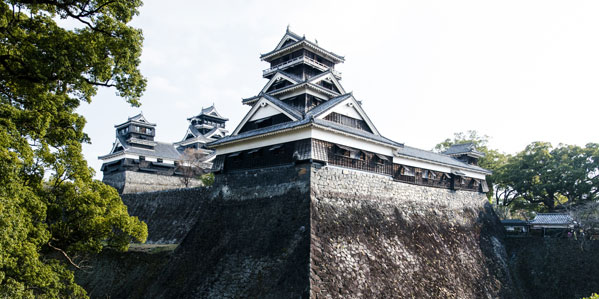
Kumamoto City (social experiments, etc.)
-
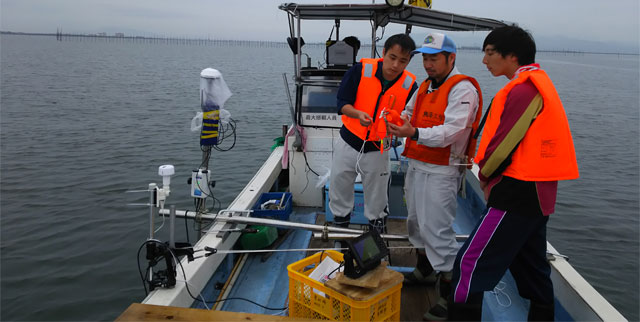
Ariake Sea (on-site survey)
-
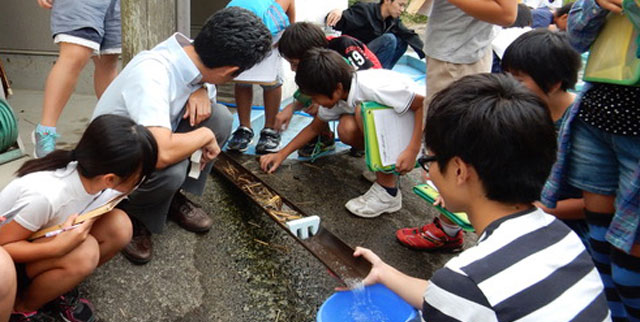
Aso (disaster prevention education)
-
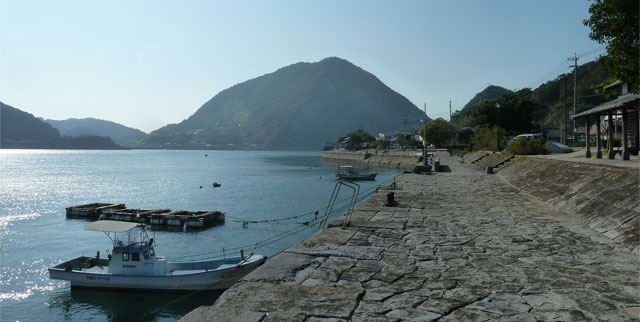
Misumi Town (workshop)
Developing problem-solving and communication skills
The course offers a range of lectures and seminars on how to design and construct public spaces and social infrastructure, and it aims to use interactive learning to strengthen students’ problem-solving and communication skills.
Engineering
Communications
We will train students to develop communication skills related to “manufacturing” and the ability to extract and organize issues in the social environment and local community.
Comprehensive Civil Engineering Seminar/
Comprehensive Regional Design Seminar
Students will form teams, utilize all the skills they have acquired, and conduct exercises to devise practical design plans to address a problem.

Civil Engineering Design
(Civil Engineering Education Program-Specific Subjects)
We cultivate practical “design capabilities” for solving problems.
Urban Planning Seminar
(Subjects Specific to Regional Design Education Program)
Students will learn how to develop plans to solve problems that exist in real cities and regions.

Public Space Design
(Subjects Specific to Regional Design Education Program)
Students will learn the design process hands-on, from research to design and presentation.
Hosting lectures by people active on the front lines
Before the internship begins, we hold lectures inviting people working on the front lines of government agencies, construction companies, and consultancies. This provides material for choosing an internship location and for preparatory study.
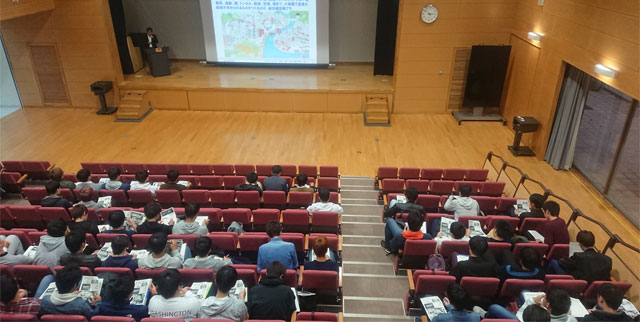
A wealth of research fields unique to Kumamoto
Kumamoto is surrounded by mountains such as Aso to the east and the Ariake Sea to the west, and the Shirakawa River, a first-class river, flows through the city of Kumamoto. It is blessed with a rich natural environment, which makes it an extremely suitable place for environmental research. Additionally, the size of Kumamoto city, with a population of approximately 650,000, is neither excessively big nor excessively small and is thus suitable for conducting social experiments; a major attraction is that you can directly participate in Kumamoto’s urban development through research.
A charming community
The Department of Civil Engineering and Architecture values interaction between faculty members, students, and alumni. The existence of a community in which students can take the initiative in planning and running events will be a valuable asset even after they graduate.

 JP
JP


